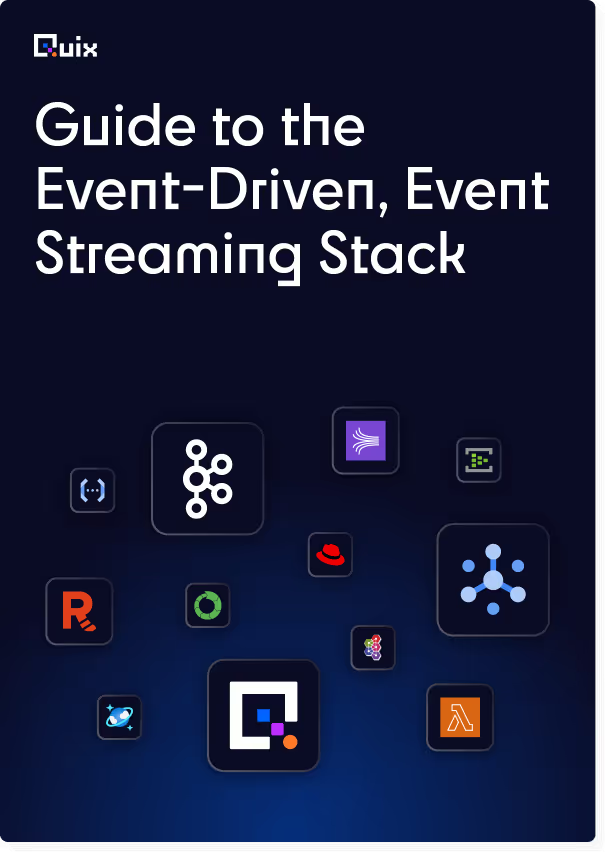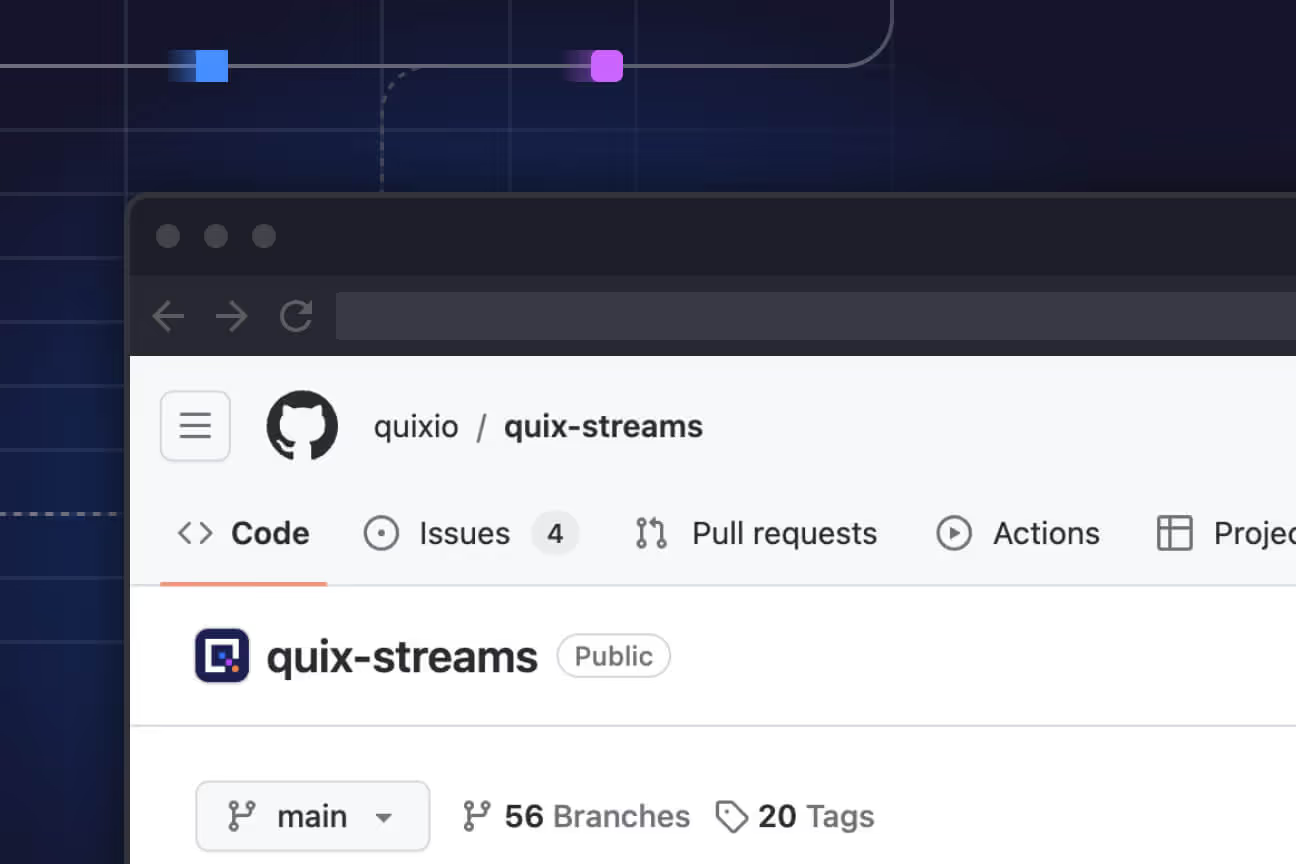Announcing Quix 2.0—now with Git integration and multiple environments
Quix 2.0 is here 🚀 Designed around the concept of Infrastructure-as-Code, Quix 2.0 makes it easier to build and run reliable, powerful event-streaming applications that scale, with a single source of truth powered by Git.

Today, we’ve upgraded Quix to make developing event-streaming applications even easier. You can now connect Quix to your own Git provider and manage your infrastructure as code. Quix 2.0 now supports multiple environments too, so you can create any named environments you like such as “dev”, “staging” and “prod”.
Quix 2.0 is built with Infrastructure-as-Code in mind
Now, your Quix projects sync up with Git, giving you one reliable source for your event-streaming apps. It’s compatible with GitHub and GitLab, so you can set up isolated dev environments whenever you need. And if something breaks in production, you can fix it quickly with a pull request.
The Git feature also lets you move code from development to staging and production automatically—no clicking around in a UI needed.
Workspaces are now “projects”
What used to be called "workspaces" in Quix are now called "projects'' that are linked to specific Git repositories. Each project can have different environments, and each environment links to a specific Git branch. Quix creates a deployment configuration file (quix.yaml) for every environment, which keeps track of all your app settings and deployments. Feel like getting hands-on? You can tweak that configuration file yourself to set up pipelines with just code. You can also create protected environments, assign new branches, and create pull requests with the click of a button.
Benefits of the new Git integration
Centralised Code Management: Manage your Quix-related code alongside the rest of your application code.
Enhanced Collaboration: Quix's interface makes concurrent development and code merging more intuitive than Git alone because you can run and test each other’s code within the Quix IDE.
Direct Deployments: Deploy changes to different services right from your Git commits or pull requests within Quix.
Automated Environment Setup: Quix automates the setup of multiple environments from different branches such as development, staging, and production environments or specific named feature branches.
Infrastructure-as-Code: Use Quix's YAML configuration files to define everything from service deployments to data pipeline settings, all tied to specific Git branches. This makes it incredibly easy to replicate other projects (such as our project templates).
More Features
New Quix-managed Git service powered by Gitea
If you're starting a new project in Quix and don't already have a Git repository, no worries—Quix will automatically create one for you using Gitea. This means you can focus on coding without the initial setup hassle. Your Quix projects and their corresponding Git repos are managed in one place, streamlining your workflow.
The Quix UI supports more Git Operations
You can now merge branches and create pull requests right inside the Quix UI. No need to switch back and forth between Quix and your Git platform—do it all in one place and keep your workflow simple.
You can now manage your secrets in Quix
Quix now offers built-in secrets management, making it easier and safer to handle sensitive data like passwords. You can store these secrets right in Quix and securely use them in your builds and deployments. Plus, with the new 'Secret' variable type, you can assign and transmit sensitive information directly to your deployments without exposing it to anyone else using the platform.
Easily sync your Quix configuration with your Git repo
Quix shows the sync status between your local environment and the Git repo. You'll know at a glance if everything is aligned or if you need to update. You’ll see a "Sync environment" button that updates your local YAML if it's out of sync with the one in Git. It ensures your configurations match.
Try out Quix 2.0
If you already have an active account, you can simply log in and create a new project to try out the brand-new version of Quix.

If you are not a Quix user yet and you want to try out the new functionalities, or if you just need some inspiration on what you can build with Quix, we created 2 ungated experiences:
Project template: image processing
This project uses object detection and real-time image processing to visualise traffic density on a map of London. Quix is ingesting live video frames from London's traffic cameras (TfL) and detects the vehicles in each frame.
View “Computer Vision” template
Project template: sentiment analysis
This project analyses real-time message feeds and uses natural language processing to detect the emotional pulse of any conversation.
View “Sentiment Analysis” template

Check out the repo
Our Python client library is open source, and brings DataFrames and the Python ecosystem to stream processing.

Interested in Quix Cloud?
Take a look around and explore the features of our platform.

Interested in Quix Cloud?
Take a look around and explore the features of our platform.

.svg)






